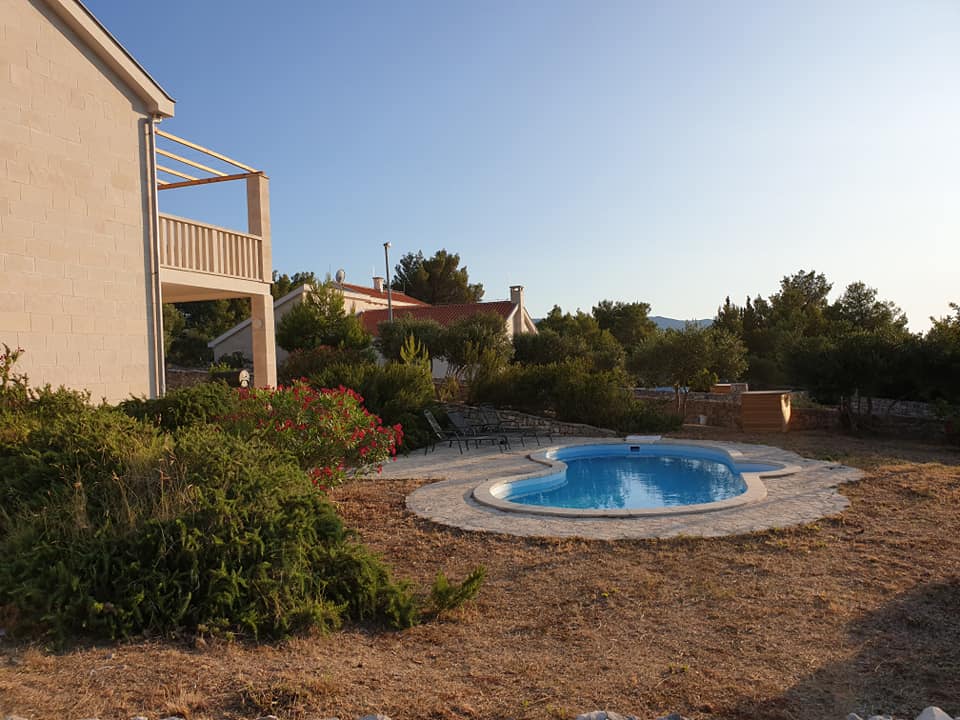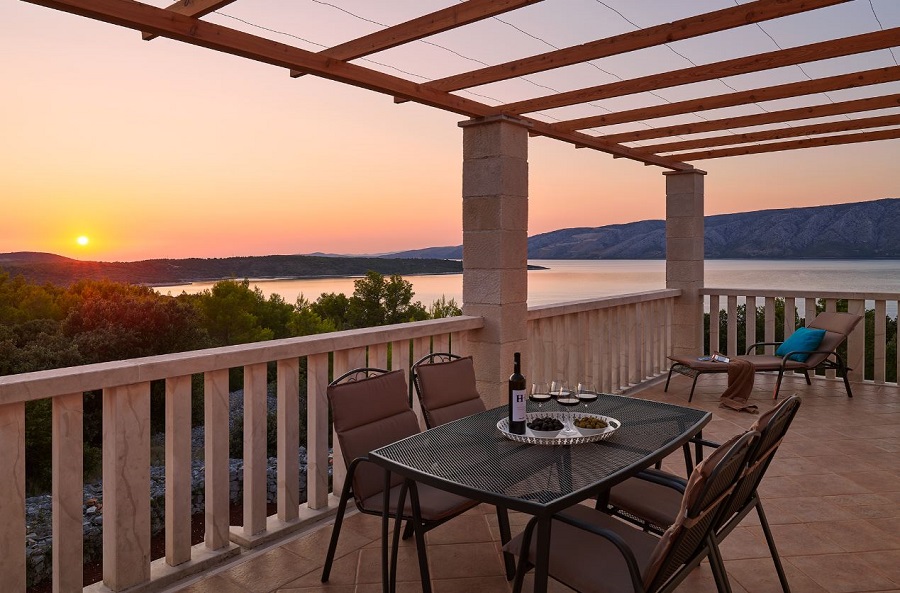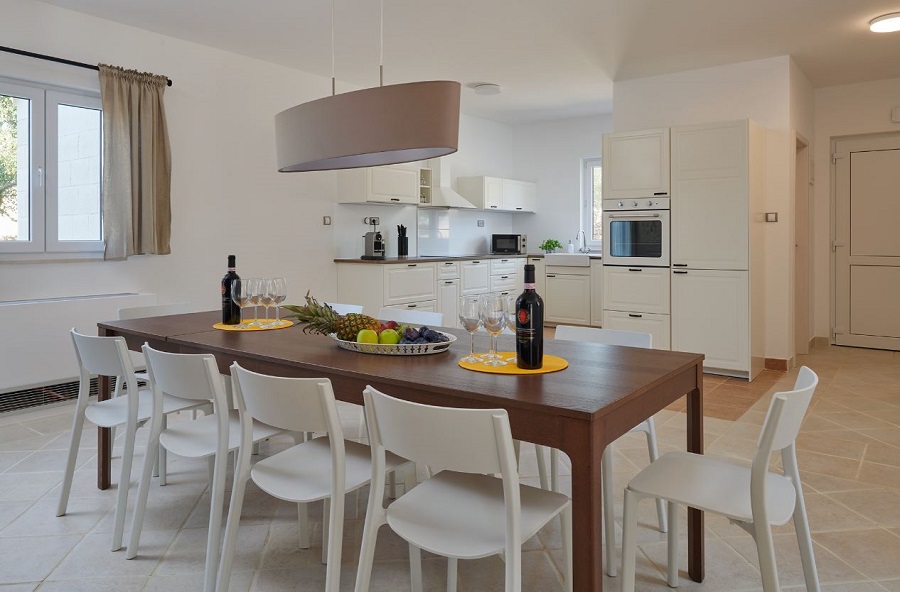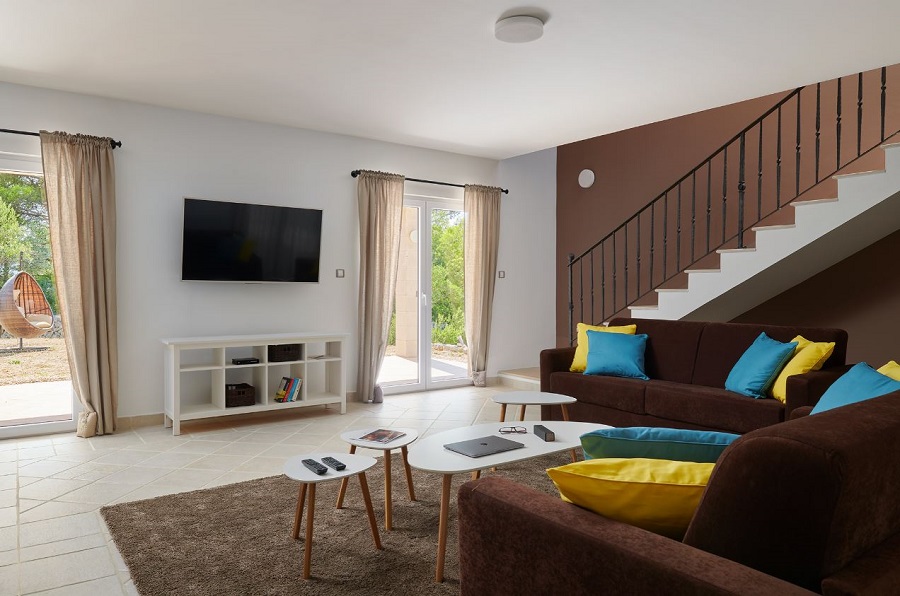Luxury Social Distancing on Remote Hvar Residential Peninsula Complex
October 6, 2020 - With the prospect of winter lockdowns a distinct reality, meet the remote Hvar residential complex near Stari Grad which provides a comfortable alternative for remote workers.
There is a hidden part of the island of Hvar which is very central, spectacularly beautiful, and rarely visited. Just 2 minutes by car from the town of Stari Grad, home to a UNESCO World Heritage Site and one of the oldest towns in Croatia.
A hidden part of Hvar which is both remote and accessible, full of protected natural beauty, just two small villages, and endless isolated bays and coves, where one might encounter some familiar faces - actor Goran Visnjic owned a property in one of the bays until recently.
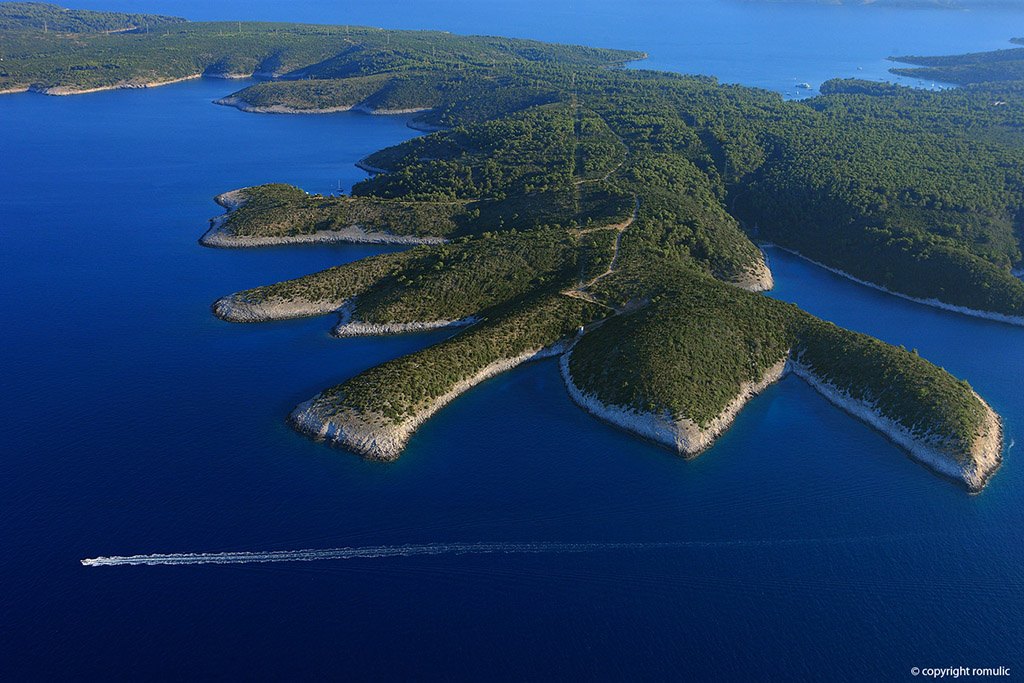
(Photo Romulic and Romulic)
The Kabal Peninsula immediately north of Stari Grad is a dream for photographers from the air. It stretches 12 kilometres north to the northernmost tip of the island, where one can find some unusual manmade traces in this otherwise unspoiled paradise. At the top of the peninsula, there are some tunnels built in the Tito era to guard the Stari Grad channel. You can see them from the ferry if you look closely on the left as you enter the deep channel. But for an even better view, visit the tunnels at sunset - the views are truly spectacular.
But the main attraction of the Kabal peninula, whose idyllic 8.7 km2 is populated by just 72 people, is its arresting natural beauty. Who can resist a morning dip in waters such as this?
A few weeks ago, I wrote an article called As Tourists Leave Croatia, the Case for an Extended Autumn Stay on Hvar. It was written towards the end of August, with UK (and other) quarantines in force, and with talk of winter lockdowns getting louder. While Hvar in winter might not have the buzz of peak season, I argued, its abundant nature, sunshine, proximity to the sea, and healthy lifestyle made it a much more attractive option for those who were free to work or live remotely. I will be eternally grateful for the opportunity to lockdown on Hvar rather than in a city earlier this year. That sun, nature and those crashing waves helped with the sanity levels considerably.
Initial reaction to the article was mixed, including a healthy dose of skepticism. There is nothing to do on Hvar in winter, argued several. With reasonable Internet and access to global digital services, I would argue that there is a much better lifestyle on Hvar in winter than cooped up in the UK for months watching the rain and looking at the same old five faces day in, day out for months.
And then, as the threat of a restrictive winter became more real, opinion changed, and people started enquiring about availability. And here we are, in this crazy of craziest years, as we find our apartment empty in June but booked for a month in October. Two digital nomads, happy to work remotely in the sun on our terrace in Jelsa, while enjoying the magic of Hvar as a cycling destination.
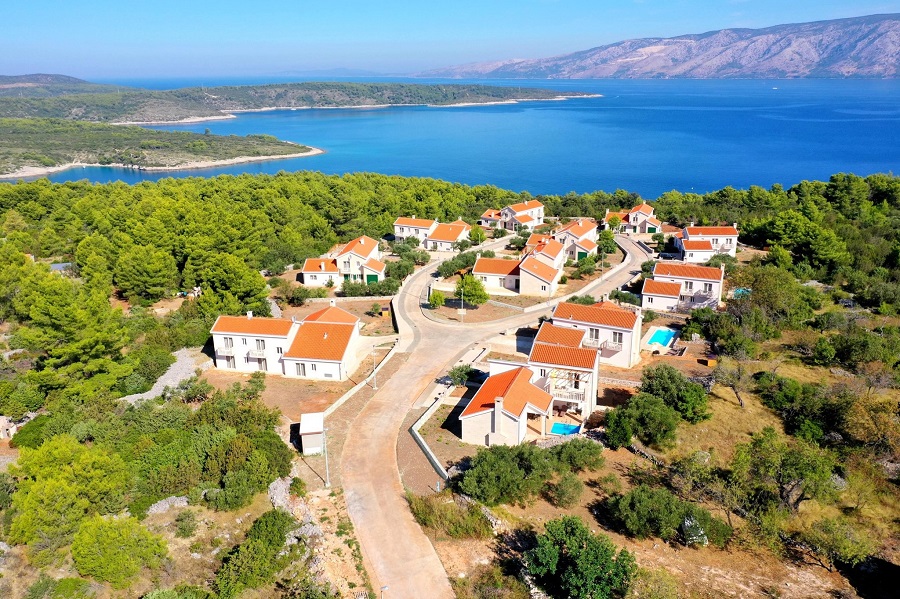
But something else happened in addition to enquiries from digital nomads. Local businesses and accommodation providers started getting in touch, offering their services and wanting to get involved in the new opportunity. Croatia's natural beauty, it seems, is attracting interest from remote workers looking for somewhere healthy to ride out the pandemic. A colleague told me that he is working with a resort on the coast to bring in over 60 people from an international company to work in glorious Adriatic socially distanced remoteness in a resort normally closed during the winter.
Which brings us back to our idyllic little peninsula, whose many secrets include what is actually the biggest successfully completed residential project on Hvar in the last 30 years. Eleven luxury villas, each with their own pool and sea view, in a well-maintained cul-de-sac more reminiscent of the hit show Desperate Housewives than rural Dalmatia, are the latest offering for those looking for a winter escape from the pandemic. And with views like this and such a relaxed setting, it would be easy to forget the troubles of the world.
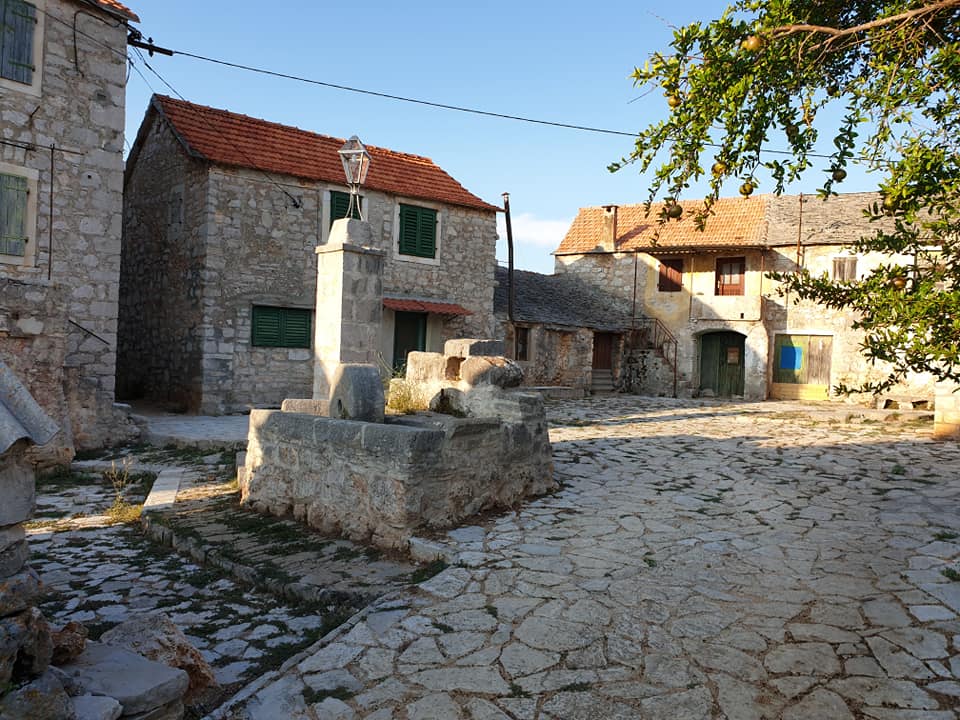
The villas are located in splendid isolation a short walk to the beach a short walk from the beautifully preserved ethno-eco village of Mala Rudina, with a permanent population of just 2. Traditional Dalmatia at its finest. Mala Rudina is a 5-minute drive to Stari Grad (or a 40-minute walk), the best town on the island for year-round living with its shops, 12-month restaurants, and ferry terminal to Split. The picturesque pedestrian old town dates back 2,400 years and is the perfect spot for a waterfront coffee to accompany a trip to the shops.
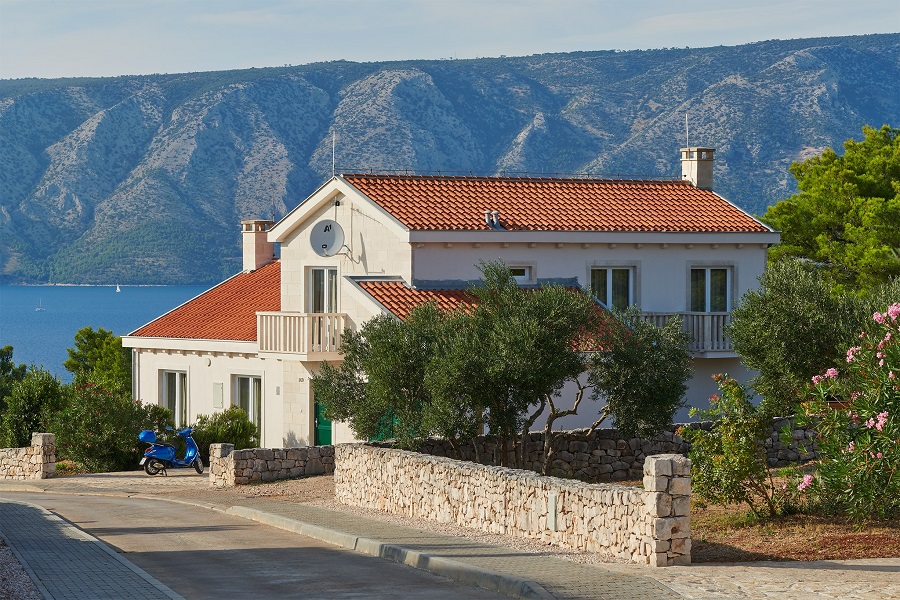
The villas themselves are still relatively unknown on the island, which is perhaps somewhat surprising as they comprise the biggest residential development on the island in recent memory.
You don't get sunsets like these in Manchester...
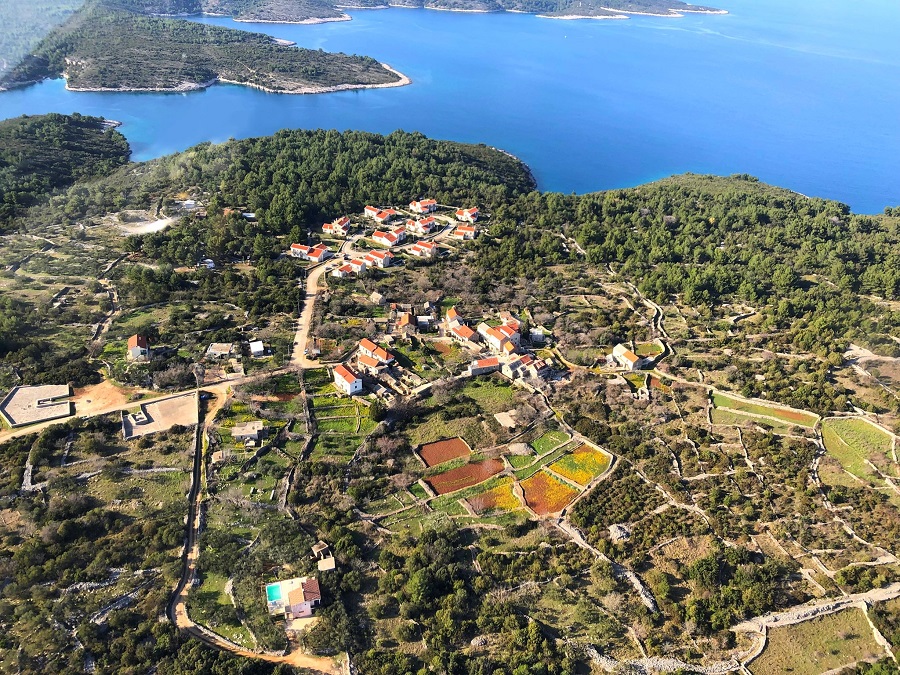
Construction started in 2004, but the complex was only completed last year, when new Czech owners finished off the villas to a very high standard, and they opened for business towards the end of last summer.
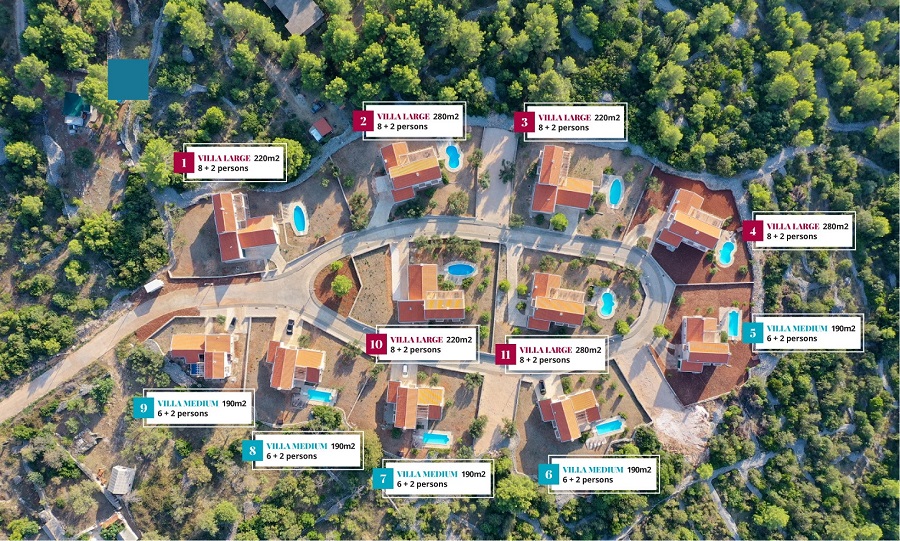
The villas come in two sizes - 280m2 sleeping up to 12 people, and 190m2 sleeping up to 10. Plenty of room to social distance, and that is only on the inside. Each villa comes with its own outdoor pool and landscaped gardens.
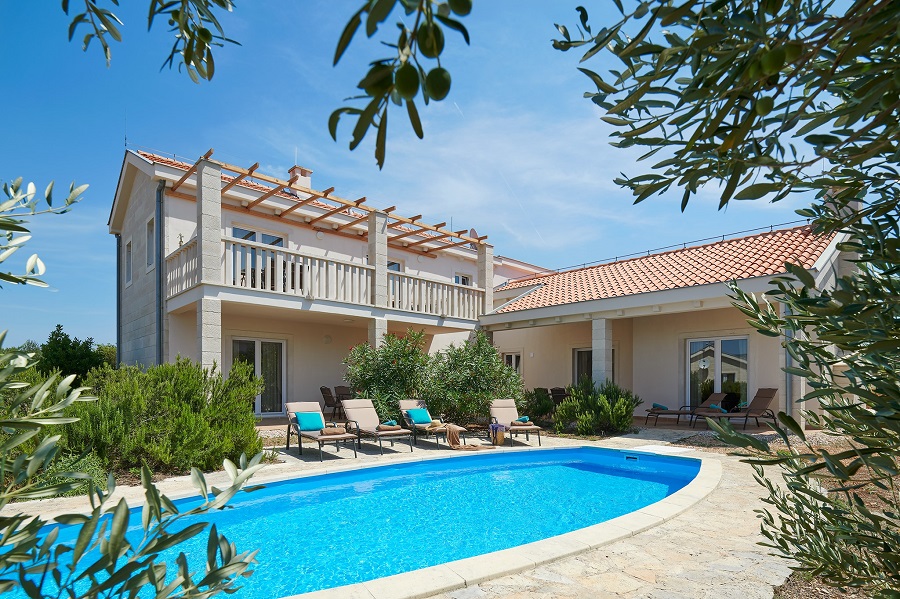
In order to adapt to the changing global situation, the villas are now available for longer term rent in the autumn, winter and spring seasons, with special packages available outside the peak season months.

Lockdown in Manchester, or breakfast on the terrace?
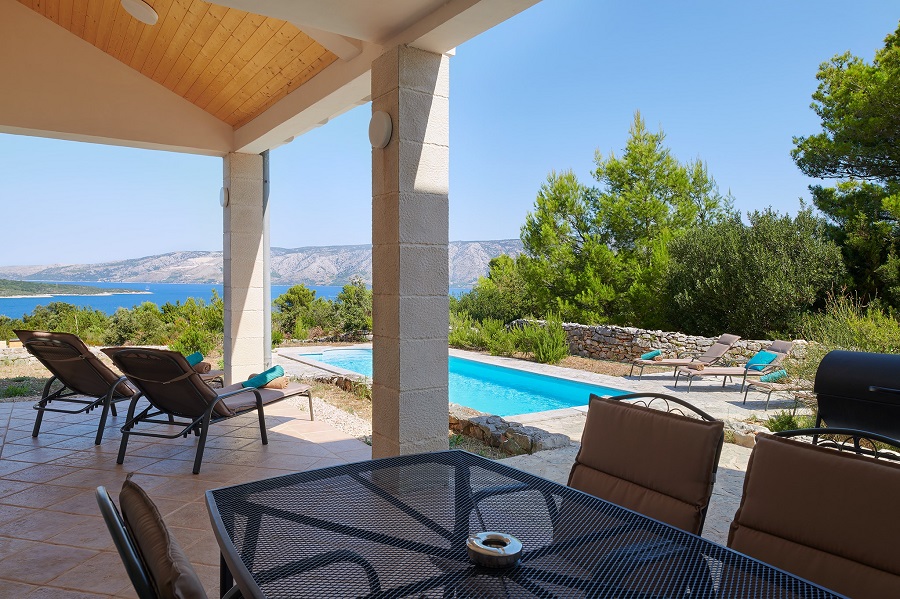
Having lived on Hvar for 13 years year-round, I am perhaps better qualified to comment on the winter experience there than many. Summer visitors used to full beaches, a wide selection of restaurants and a vibrant nightlife, complain that everything is closed in winter, and there is nothing to do.
While that is true up to a point, winter on Hvar offers a wealth of other great experiences, while it is also largely true in places that this is not much to do in places like Manchester in lockdown as well. The main difference being the sun, the abundant nature, and the freedom to roam.
The Internet is a wonderful thing, and it has made us all a lot more equal. Living on Hvar all those years, including during lockdown, showed me that while there were certain aspects of life I missed moving from a big city, access to good Intenet and fresh local ingredients for food meant that the quality of life was actually not as different as one might think. Factor in a lockdown, and a Dalmatian island wins every time. And if you do get cabin fever, there are several ferries a day to Split, a city which continues to impress in recent years.
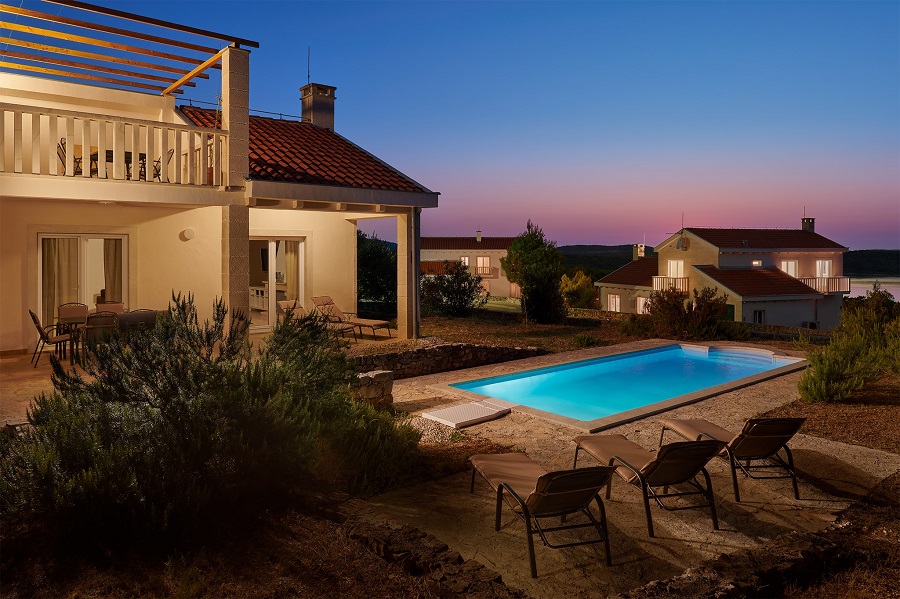
Did I mention the sunsets?
2020 has taught us to adapt to situations of unimaginable change. Organised tourism in Europe began on Hvar back in 1868 with the foundation of the Hvar Health Society. The focus then was on the temperate climate of the winter months for convalescing aristocrats from the Austro-Hungarian Empire.
Could another health issue - the coronavirus pandemic - help develop winter tourism once more on Hvar, this time powered by climate, lifestyle, healthy living and luxury accommodation?
To learn more about the luxury villas of Mala Rudina on the edge of Stari Grad, visit the official Luxury Villas Stari Grad website.
For more news from the island of Hvar, follow the dedicated TCN section.
For the latest travel info, bookmark our main travel info article, which is updated daily.
Read the Croatian Travel Update in your language - now available in 24 languages
After 15 Years, Luxury Hvar Villas in Male Rudine Finally Set to Open
July 13, 2019 - Fifteen years after expensive property shows in London and elsewhere, the troubled Male Rudine villas on Hvar are set to open their doors.
They were the poster child of how difficult it was to build anything on Hvar, and I remember very well the day I first heard about a new villa complex in Male Rudina, back in 2004. I was in the real estate business at the time and had my own agency.

Male Rudine? That divine little hamlet with just two full-time inhabitants. a new development of 11 luxury villas all with pools in a cul de sac similar to the set on Desperate Housewives. Hvar had never seen anything like it.
And it looked like Hvar never would.
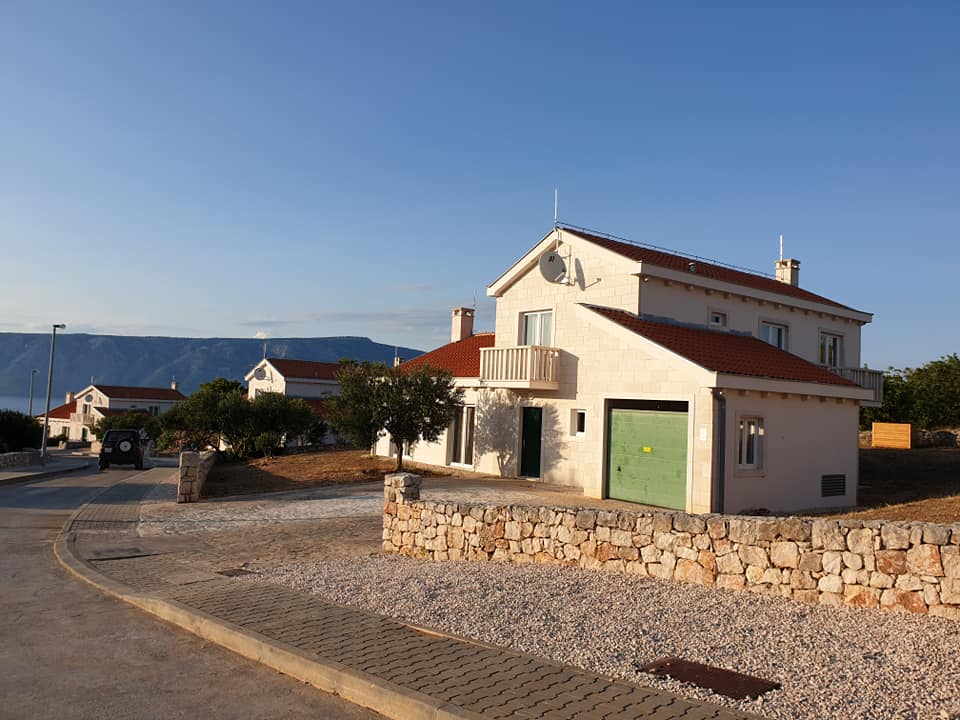
For soon after the building permit was issued (and it did exist, I still have a copy), the permit was revoked, the first time I had heard of such a thing in my real estate dealings. The owners, confident that they could overturn the decision, decided to press on with the building, and they finished construction of all eleven villas. But with no water and electric connections, the project came to a grinding halt. And that, seemingly, was that. I remember the price of the best villa at the front of the plot - 737,000 euro.
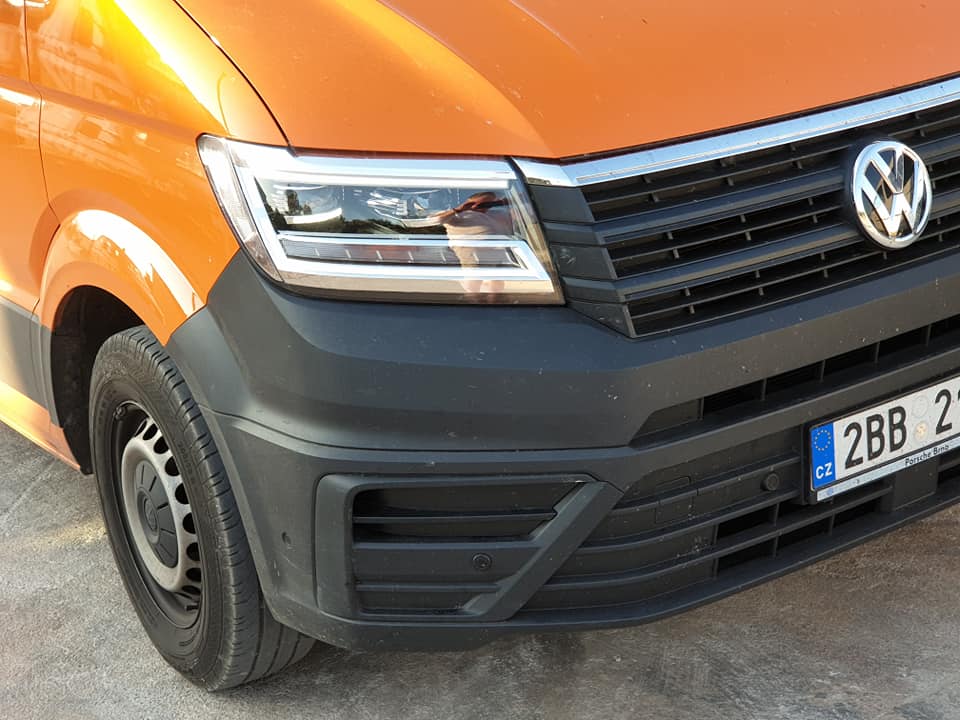
Years passed. The villages suffered from negelct, and there was a general sense of decay and abandonment. I visited a couple of time over the years, but things only looked sadder. The Four Seasons Brizenica Bay project - itself on its knees and still awaiting agreement on the road access, never mind a full construction permit - was close by. If the villas could be legalised and rescued and Four Seasons built, this would be a rather interesting pocket of the island.
I was showing friends around the island, and we decided to go to Male Rudine to take some photos of this lovely Dalmatian hamlet and its gorgeous traditional features. I went to show them the villas too, an example of how things go wrong. And I was surprised to see we were not alone. There was a flurry of activity, with workmen everywhere - and they all had one thing in common - their cars had Czech plates.
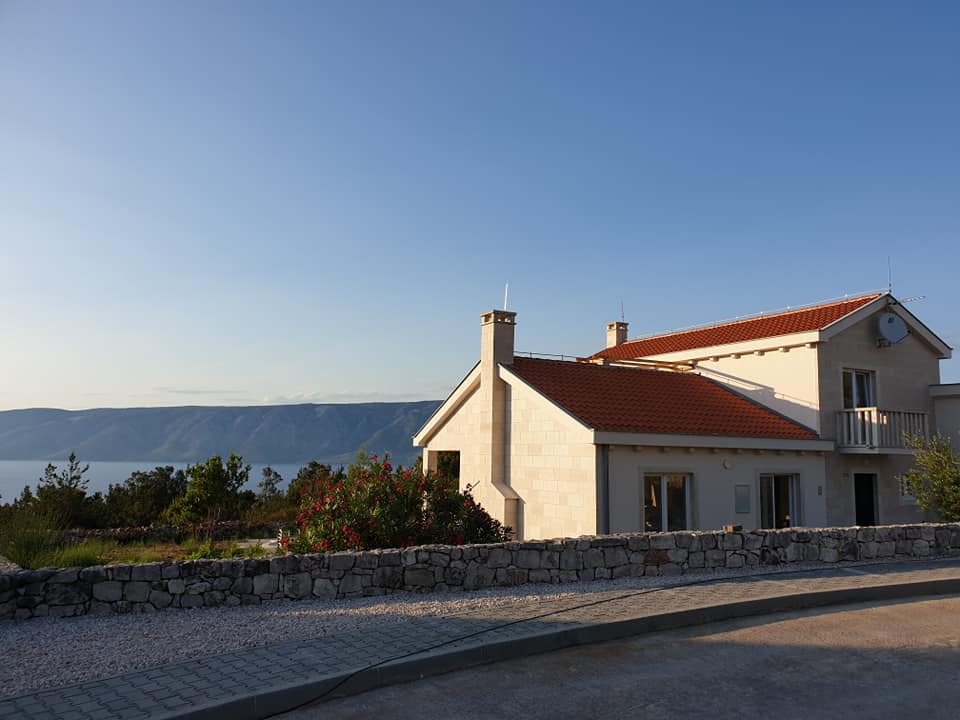
I asked one what the story was. A Czech investor had bought the lot (at quite a nice price I assume), and they were busy finishing and furnishing them all for this season. They plan to open next month, for rental only.
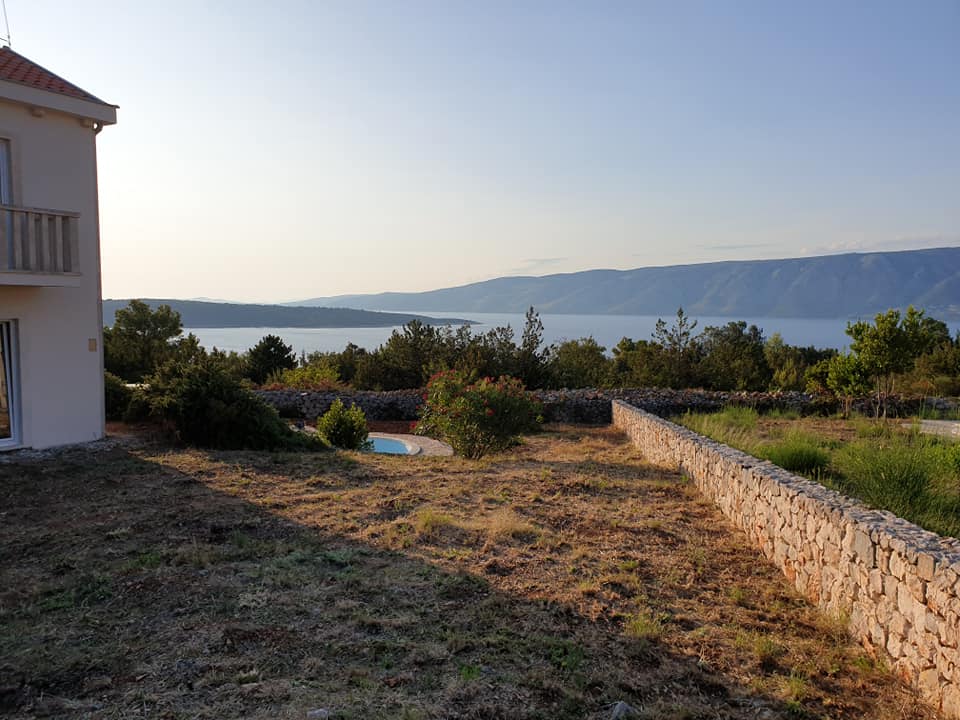
Walking around, the development looked tidy and well-kept. There is still work to be done on the landscaping, but the views were as gorgeous as always, and the peacefulness was idyllic.
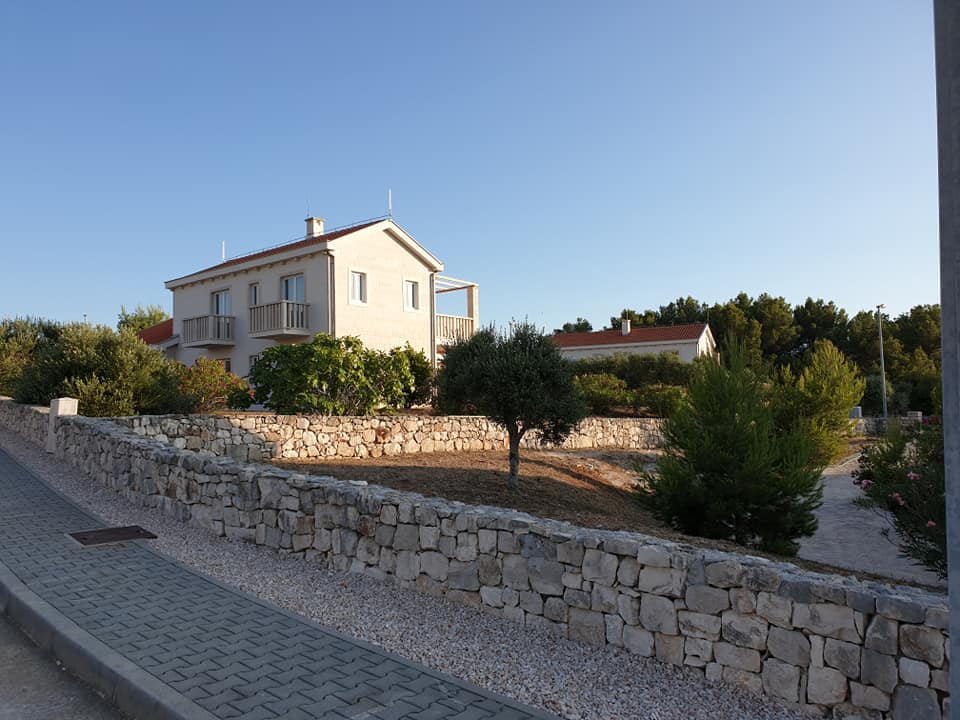
A white elephant project has come back to life, and I am sure it will attract some good guests to the Stari Grad region in the years to come.
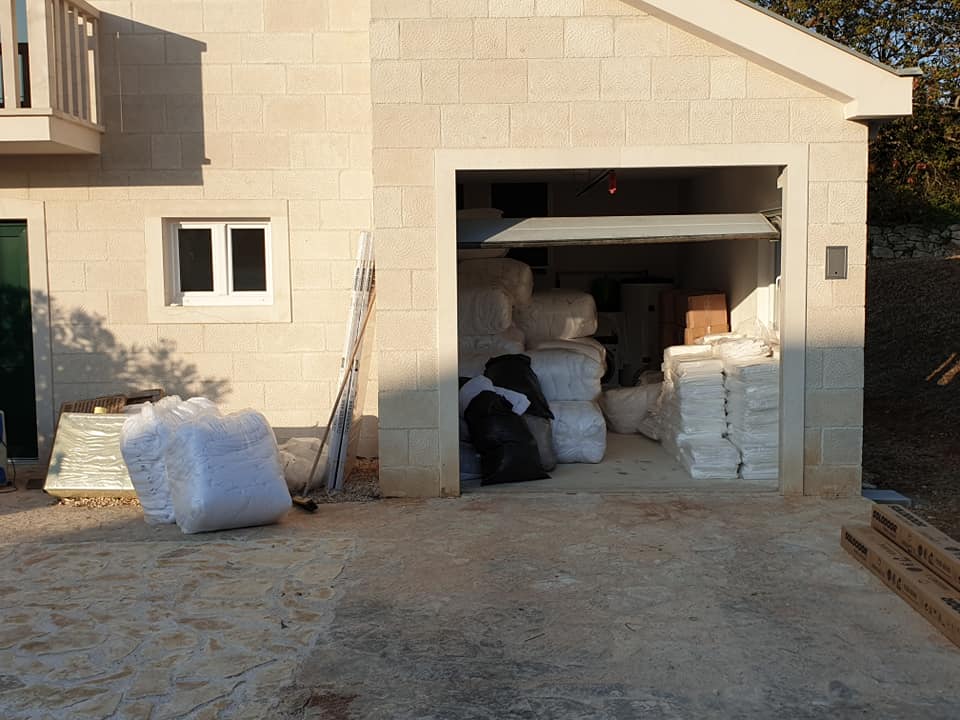
Just the final touches and linen to be added, and things will be ready for business, some 15 years on. In Dalmatia, perhaps this is not such a slow timeframe. Pomalo, pomalo.
